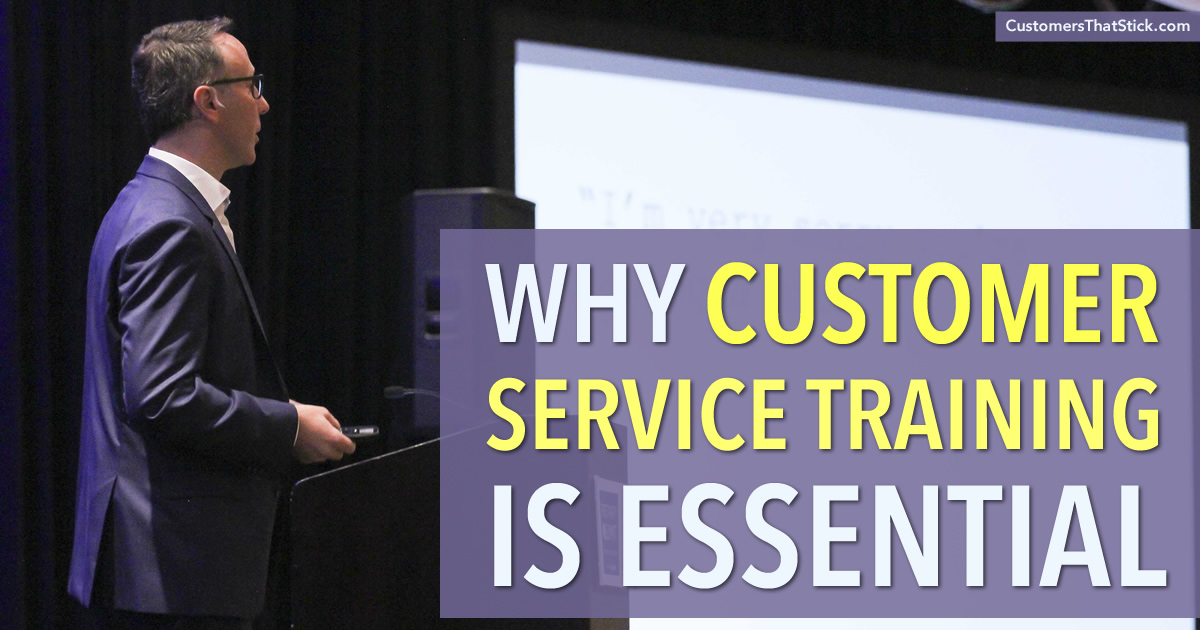
Every organizational leader wants their teams to provide great customer experiences.
They put “the customer comes first” on their company posters, they mention the phrase “customer-centric” in their annual reports, and they proudly announce the newest software update designed to improve the company’s customer experiences.
Yet, these same leaders are often taken aback by the lack of execution in the field, by the failure of their team to deliver the experience they expect.
This challenge often has many roots, but in most organizations, a lack of customer service training lies at the center of the problem.
In most organizations, a lack of proper training is at the heart of customer service issues.
Let’s face it. In too many organizations, training comes down to the “keys and handbook” approach – they take their employees through the handbook, hand them the keys, and show them how to use the computer. Or, if they’ve “leveled up,” they actually have a training manual, which all too often focuses on the operational aspects of the position with, if you’re lucky, a sprinkling of customer focus added in.
A few organizations even throw in a mentor for the new employee, which can be effective but often does more to educate the new employee about corporate politics and personalities than about the best way to take care of customers.
And we haven’t even begun discussing what happens when the employee is no longer “new”.
Operational training is simply not enough. Designing great customer experiences is not enough. To provide Hero-Class® customer experiences, your team needs to be trained on so-called “soft” customer service skills.
Here are five reasons customer service training is essential:
We are still wired for the Savannah, with fight or flight caveperson brains. We are not wired to respond to anger, aggression, or threats with a calm, helpful demeanor. It takes training to override our biological responses to deal with difficult customer service situations in a constructive manner.
For any customer experience that has a human interaction within it, the “human touchpoint” will likely be one of the most important touchpoints. We remember our customer experience based on the emotions we felt during the experience, and we are generally more likely to feel an emotion, positive or negative, when interacting with another human being. It’s just how we are wired.
Human touch points are often the most emotionally impactful touch points.
In few areas of business is the phrase “if you’re not moving forward, you’re moving backwards” more relevant than in customer service. An athlete who does not continuously train to improve soon gets left behind by his competitors. Similarly, customer-facing team members who are not regularly training to increase their skills and renew their customer focus are likely to fall into bad habits, both educational and motivational.
Like the executive mentioned at the top of the piece, you might say all the right things about taking care of customers, but what message is your team receiving if you’re not willing to invest in the customer experience and your team.
When you provide your team with customer service training you not only reinforce a customer-centric focus, you also send a message that customer service and customer experience are priorities and that giving your team the skills and confidence needed to succeed in these areas is a priority as well.
All other things being equal, who do you think is happier at work, someone who approaches tough situations insecure in their skills and frantically hoping to avoid the situation altogether or someone who has the confidence and competence to meet the task head on?
The link between training and job satisfaction is complicated (just search “impact of training on employee satisfaction” to get a sense of it); however, in reading the literature I have come to the conclusion that good training (not just training) can enhance employee confidence, competence, and satisfaction.
Coming from over a decade in retail, I get it. Fitting training into a new hire timeline is tough and adding ongoing training for an entire team can seem virtually impossible.
After all, there are only so many hours in the day, and hey, we’re all understaffed as it is.
But leadership is always about one thing: choosing priorities. And it’s all too easy, especially in today’s under-resourced, distraction-fueled business environment to let the urgent overtake the important.
So, the question every customer experience leader should ask themselves is this one: Is customer experience a strategic focus of my organization?
Every leader should ask: is customer experience a strategic focus of my organization?
If not, then you might be fine once your employees know where the paper clips are, but if you care about customer experience — if, as Gartner found, you are like 89% of firms that want to compete on customer experience — then customer service training is not optional. It is not an extra. It is an essential component of creating a Hero-Class® customer experience that is a competitive advantage for your organization.
So, whether you refine your in-house training, host a customer service workshop, or provide virtual customer service training to your team, make training a strategic priority. Your customers and your team will thank you.
Comments are closed.
© 2011-2025 CTS Service Solutions, LLC.
All rights reserved.
Legal Information | Privacy Policy
How to Cite this Site
I think #1 is so key, and so overlooked. We’re simply not naturally wired for customer service. It definitely takes training and lots of practice!
I always believed customer service training is vital to any business. This article confirms why I got into the industry in the first place. Thank you for sharing. Look forward to putting more of this advice into action.
Pingback: 8 Essential Tips for Multilingual Customer Service